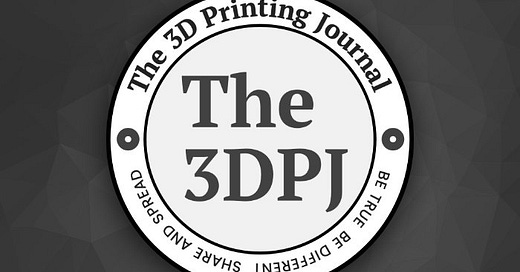Atomic Layer of the Day:
Yesterday, the 3D Printing Industry portal announced the results of this year's "2024 3D Printing Industry Awards"—still considered the largest and most prestigious competition in the Additive Manufacturing sector. I say "still" because, after what I saw yesterday, I’m not sure it deserves that title anymore.
Few notes before we go any further:
Nothing I write here is personal. I know the person running 3D Printing Industry, I like and respect him, and assume there are internal factors contributing to the way things have turned out. The industry is in crisis, so why would the portal covering it thrive?
I once organized such events myself but stopped for various reasons. That was entirely my decision. So, I’m not criticizing out of envy or because "I failed mine." I launched my awards a decade ago and wrapped them up five years ago, and it was only my well thought decision.
Having organized such events, I believe I know how to do it properly. This, in my view, gives me the legitimacy to critique and suggest improvements.
So, without further ado, here’s everything wrong with this year’s 3D Printing Industry Awards.
The awards began in 2016 and initially featured two main stages:
online voting
a formal awards ceremony in London.
Winners were determined by both online readers and industry experts, whose numbers grew each year. This year, there were reportedly hundreds of experts involved, including myself.
In 2022, due to the pandemic, the awards were held entirely online. My company, GREENFILL3D, was nominated in the "Sustainability in Additive Manufacturing" category. I didn’t win anything, but I got to see how the event functioned "behind the scenes."
And the organizational quality was truly poor. For instance, there was no audio during the first several minutes of the broadcast, meaning our segment (one of the first) aired completely muted. In the final video, our segment was cut out entirely.
Personally, I didn’t mind—I didn’t win after all—but it reflected poorly on the winners whose moments of recognition were lost. Still, I dismissed it as a one-off issue due to the pandemic. Even the infamous 2020 online Formnext event flopped, so why shouldn’t this one?
Last year, the awards seemingly returned to form, with a high-quality ceremony, judging by the photos.
This year, however, it feels like the swan song of the event. Instead of a ceremony, they simply published an article. A brief introduction, a list of winners and runners-up, and that’s it.
The article itself was poorly formatted and difficult to read. With so many nominees, going through it felt endless. Frankly, I did a much better job with my awards back in the day. Please compare for yourself:
Now imagine being one of the winners. The entire recognition consists of a mention in an article on 3D Printing Industry. Technically, it has as much value as if I handed out my own awards here on The 3D Printing Journal. Winners could get a commemorative JPG graphic to post on social media—and that’s it.
It’s disappointing and sad. Today, I received a press release from Meltio, proudly announcing their win in the "Enterprise 3D Printer of the Year (Metals)" category. But that’s all they get to celebrate.
But that’s not all… The descriptions under some awards are missing entirely, like in the case of Bambu Lab, which won two awards. Other times, only the runners-up are quoted. For example, under EOS winning "Best Industrial 3D Printer," the quote comes from someone at Axtra3D instead. Confusing.
I don’t know why it turned out this way, but it looks like no one really cared. I won’t speculate whether they didn’t care or why—but it feels like the execution effort was at 30%.
It’s so disappointing. Someone should have done it better.
Atomic Layer from the Past:
12-18-2017: Desktop Metal completed the first deliveries of its Studio System.
News & Gossip:
Good news! Shapeways has acquired Thangs, a 3D file-sharing platform, from Physna, marking the next step in brand’s relaunch after its bankruptcy in July. Thangs will now serve as a consumer-facing brand for creators, enabling them to monetize digital designs and sell physical products using Shapeways' manufacturing services. Shapeways will continue focusing on business customers while leveraging Thangs' advanced IP protection and 3D search technology. Thangs, launched in 2020, has grown into a robust platform hosting over 24 million 3D printable models. The integration aims to enhance both brands' offerings and create new opportunities for designers globally.
Divergent has earned the Nadcap 12-month Accreditation for Additive Manufacturing (AM), marking the first audit under the new AC7131 standard. Its Divergent Adaptive Production System (DAPS) integrates AI and proprietary 3D printing for aerospace, defense, and automotive applications. DAPS, now TRL9, supports major automakers and U.S. defense programs.
Raytheon and Ursa Major successfully tested a 3D-printed solid rocket motor for the US Army, enhancing range and affordability. Further tests planned for 2025.





